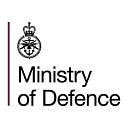5 things to know about Human Security and civilian protection
Human Security is a branch of Defence that covers civilian protection, conflict related sexual violence, and much more. But why is this important and how did it come about? This article outlines why
3 min readOct 30, 2020
1. Human Security comes under the UN Resolution, Women, Peace and Security (UNCR 1325.) Why did this resolution come about?
- The nature of warfare is constantly changing and civilians are increasingly being targeted. New resolutions needed to be made to highlight civilian protection.
- The resolution recognised that conflict disproportionately affects women and girls.
- Women are 50% of society and need a seat at the table during peace processes.
- A gender perspective means considering the needs of boys, men, girls and women differently.
- There have been 9 new resolutions about Women, Peace and Security since the first in 2000.
2. What is gender mainstreaming?
- Making gender part of every stage of the planning process.
- Making it embedded it in the process rather than an ‘add-on’.
- Makes sure that policy-makers, governments and peacekeepers consider the different affects of their decisions on all areas of society — men, boys, women, girls, etc.
3. Why is it sometimes called Human Security?
- Human Security is an umbrella term used by Defence, which Women, Peace and Security sits under.
- Highlights that gender, child and civilian protection does not only mean women.
4. What else does Human Security include?
- Protection of civilians
- Conflict-related sexual violence
- Human trafficking
- Sexual exploitation and abuse
- Much more
5. What are National Action Plans?
- National Action Plans are made by each country to suit their own unique context.
- They show how the country will aim to follow the Women, Peace and Security Resolution.
- 86 countries have created National Action Plans (as of October 2020).
Read an interview with a UN Gender Adviser in the DRC.
Read more about the UK Armed Force’s work in South Sudan.
